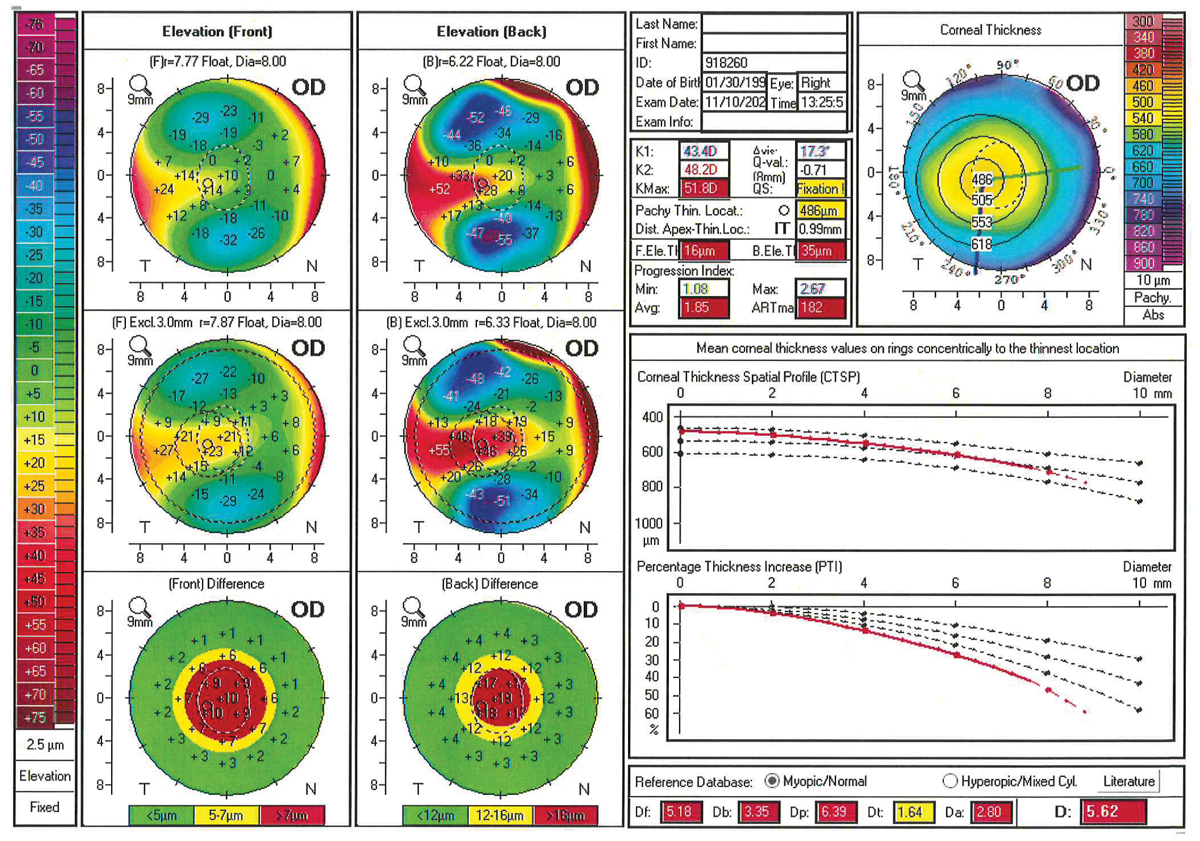 |
|
Corneal and scleral lenses fail to significantly alter the posterior corneal surface. Photo: Mitch Ibach, OD. Click image to enlarge. |
Recent research evaluating the impact of specialty contact lens wear on posterior corneal tomography among keratoconus patients found that various specialty lenses have a differential influence on corneal parameters.
The retrospective cohort study included keratoconus patients engaged in specialty contact lens wear. The researchers used Scheimpflug imaging (Pentacam HR) to evaluate tomographic parameters before lens fitting and immediately after removal of contact lenses worn consistently for several months. Patients were divided into groups according to the lens type (corneal, scleral and hybrid) and keratoconus severity.
The analysis included 34 eyes of 34 patients with diagnosed keratoconus. The reported mean duration of habitual contact lens wear was seven months. Data showed a small increase in flat keratometric reading at the anterior corneal and posterior surfaces for the entire patient cohort.
Among those in the corneal lens group (10 eyes, 29.4%), the study authors detected flattening of the anterior corneal curvature. They also observed an increase in the K1B value of the scleral lens group (15 eyes, 44.1%).
Combined topometric indices revealed a small yet significant difference in the entire cohort as well as among the corneal contact lens and moderate keratoconus subgroups.
“This study shows that habitual corneal contact lens wear does not significantly alter the posterior corneal surface, although it flattens the anterior cornea (Kmax). Scleral contact lens wear, on the other hand, did induce a steepening of posterior keratometry reading (K1B) but so small it would be clinically negligible,” the study authors concluded in their recent paper. “Consequently, posterior corneal parameters might be of clinical value in the follow-up of keratoconus when patients are unable to assure cessation of contact lenses.”
They noted that additional larger studies are required to further explore this area of research. This includes quantifying contact lens-induced changes in the posterior cornea and their clinical relevance as well as exploring how long these changes continue after contact lens removal.
Deboutte I, Kreps EO, Rozema JJ, et al. Influence of specialty contact lens wear on posterior corneal tomography in keratoconus subjects. Eye Contact Lens. September 21, 2022. [Epub ahead of print]. |


